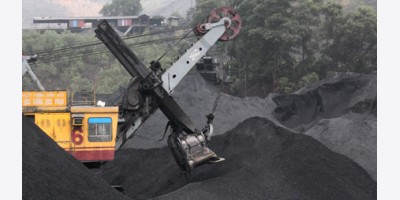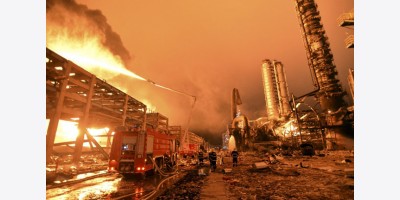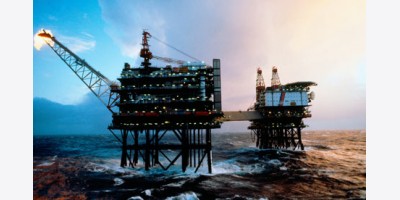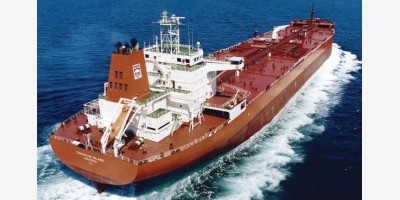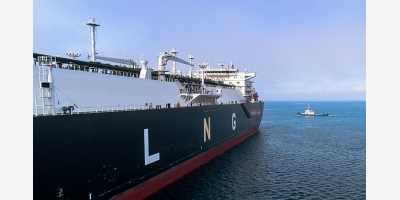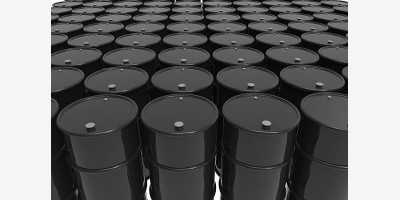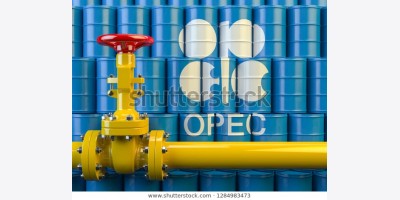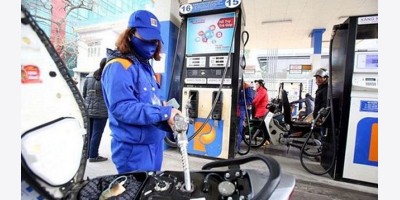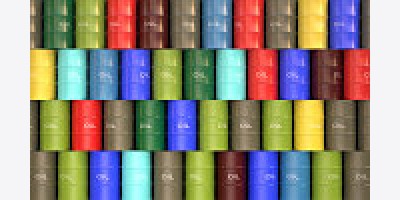By International Business Times | Commodities | Aug 07, 2014 02:57PM GMT | 1 Comment
By Maria Gallucci - Global oil and gas firms are increasingly turning to offshore fracking to extract more fossil-fuel riches from the bottom of the ocean.
The Gulf of Mexico in particular could see fracking activity grow by more than 10 percent over this year and next, according to Baker Hughes Inc. NYSE:BHI, which operates about a third of the world’s offshore fracking fleet, Bloomberg News reported Thursday.
Though environmentally controversial, hydraulic fracturing (aka fracking) operations have taken place in waters around the world since the early 1990s, including in California’s Santa Barbara Channel, the Arabian Gulf and the North Sea. Much like onshore fracking, the practice involves pumping vast quantities of water, sand and chemicals underground to crack open rocks and free up deposits of shale gas and oil.
Until recently, offshore fracking was primarily used to boost the productivity and reliability of existing deep-sea wells rather than to drill new wells. The practice accounts for only about 5 percent of the fracking market as a whole, according to About Oil. But advances in fracking technology in recent years – coupled with vast offshore discoveries – have emerged to make large-scale fracking an increasingly feasible business, Bloomberg noted.
In response to growing demand for offshore fracking, oil services companies like Baker Hughes and Schlumberger Ltd. NYSE:SLB have increased their global fleet of fracking ships by 31 percent since 2007, according to an Offshore Magazine survey cited by Bloomberg. The ships, called simulation vessels, measure 300 feet long and carry roughly 7 million pounds of people and equipment, including rock-crushing engines and stores of sand. Schlumberger said it launched five new vessels last year for work in the deepwater Gulf, Indian Ocean and North Sea.
The full scope of offshore fracking’s environmental impacts is still a mystery to drillers and their regulators. While the process has been linked to groundwater contamination onshore, officials are less clear about what could happen in the depths of the ocean.
Fracking’s effects “are not well understood. To date, little data has been collected,” Alison Dettmer, a deputy director at the California Coastal Commission, told the Associated Press in February. At the time, the federal government had just approved three new fracking operations off the California coast.
Oil firms say that’s why they are proceeding with caution. “It’s the most challenging, harshest environment that we’ll be working in,” Ron Dusterhoft of Halliburton Co. NYSE:HAL, the world’s largest fracking operator, told Bloomberg. “You just can’t afford hiccups.”
Ukraine has warned it might cut Russian oil and gas flows to Europe and ban Russian airlines from crossing its airspace, as Moscow criticised the country for suspending a ceasefire at the crash site of MH17.
The measures are part of a sanctions bill targeting Russia that will be submitted to parliament, Prime Minister Arseniy Yatsenyuk said in Kiev.
Yatsenyuk explained it could include complete or partial bans on transit of all manner of resources, including energy resources and overflights.
Ukraine is the key country for the transport of Russian oil and gas to Europe.
Previous energy disputes have resulted in supply cuts for European consumers.
Russia in June halted its gas deliveries to Ukraine because of a payment dispute.
Yatsenyuk said the Ukrainian parliament was expected to vote on the bill on Tuesday.
The draft also envisages sanctions against 172 people -- Russians and other nationalities -- as well as against other countries and 65 companies for "supporting and financing terrorism".
Kiev has declared the pro-Russian separatist organisations in eastern Ukraine to be terrorist organisations.
Russia lambasted Yatsenyuk's announcement as a "PR move to prove to the West that Ukraine is on its side", the Interfax news agency reported, citing an unnamed foreign ministry official.
The official added that Moscow would retaliate once the sanctions were implemented.
Moscow also criticised Kiev for suspending a ceasefire at the crash site of Malaysia Airlines flight MH17, which was downed over eastern Ukraine in July.
The US and some of its allies accuse Russia of arming the separatists, who are believed to have shot down the jet with 298 people on board.
The move violates UN Security Council resolution 2166, which demands a cessation of hostilities to enable an independent investigation, the Russian Foreign Ministry said.
It added that the US, Australia and Lithuania had vetoed a Russian draft resolution criticising the Ukrainian decision.
"Again, the total hypocrisy of these countries has been exposed," it said.
Further raising tensions, Moscow said that it had detained five Ukrainian officers on war crimes charges.
Russia's Investigative Committee said it had evidence they ordered the use of heavy arms against civilians.
The commanders were among more than 400 Ukrainian soldiers who retreated to Russian territory after being surrounded by separatist forces along the border on August 3.
Ukraine said on Friday that 15 servicemen were killed and 79 were injured during the past 24 hours in fighting with separatists, mainly along the border with Russia.
Andriy Lysenko, the spokesman of Ukraine's National Security and Defence Council said the high number of injured was due to the use of imprecise "Grad" artillery systems by the separatists, the Interfax Ukraine news agency reported.
The government in Kiev accuses Russia of supplying the separatists with heavy weapons and fighters.
The rebels, in turn, accuse government forces of firing "Grad" missiles on civilian quarters in the besieged separatist cities of Donetsk and Luhansk.
Copyright © 2014 Business Spectator Pty Ltd.
All rights reserved. ABN 76 126 233 725
RIO DE JANEIRO: Profit at Brazilian state-run oil company Petrobras slumped 20 per cent in the second quarter from a year earlier, the company said on Friday, as rising fuel imports, debt costs and operating expenses offset higher output and prices.
Net income at Petroleo Brasileiro, as the company is formally known, fell to 4.96 billion reais ($2.18 billion) in the three months ending June 30. That compares with 6.20 billion reais a year earlier.
The profit was nearly a third below the 7.04 billion-real average estimate of 10 analysts surveyed by Reuters.
Profit fell 8 per cent compared with the first quarter. The results reflected a tightening squeeze at Petrobras caused by the conflicting economic policy goals of its controlling shareholder, the Brazilian government.
A drive to develop giant, new offshore oil and gas resources has Petrobras spending $221 billion over five years on expansion, one of the world’s largest corporate investment plans.
At the same time, the government has reduced the amount of cash the company has available to pay for those investments by forcing it to subsidize domestic gasoline and diesel fuel. The controls are aimed at helping the government control inflation.
With Petrobras’s refineries unable to meet domestic demand, refining unit losses have soared as it is forced to import gasoline and diesel to make up the shortfall.
Domestic fuel price hikes allowed by the government failed to keep pace with the cost of imports.
Net imports of fuel and oil rose 81 per cent compared with a year earlier, to 633,000 barrels a day in the three months ending June 30.
Reuter
SINGAPORE, Aug 9, (RTRS): Exports of Iranian marine fuel oil have unexpectedly been halted for two weeks and will not resume for at least a month, a source at the National Iranian Oil Company (NIOC) said. Trade sources said Iran could be stocking up on fuel oil for power generation in case of a shortfall in gas supplies. Growth in domestic demand for gas has outpaced local output, exacerbated by Western sanctions limiting Iran’s ability to ramp up production from aging fields.
The halting in exports of Iran’s cracked 380-centistoke — which makes up nearly a fifth of monthly sales at the bunkering hub of Fujairah in the United Arab Emirates — coincides with limited supplies into Asia, as high freight rates have hampered flows from the West and summer demand for the heavy distillate cut exports from the Middle East. “NIOC International and National Iranian Oil Products Distribution Company (NIOPDC) stopped exports about two weeks ago,” said the company source, who has direct knowledge of the move. It was not immediately clear when exports would resume. “Nobody knows how long it would take but it is not less than one month,” said the source, who asked not to be identified because of company policy on speaking to the media. Some traders estimated the halt in exports could last for up to three months.
“They (Iranians) are trying to stockpile some fuel oil cargos for October-November because there will normally be big shortages of gas so they have to burn a lot of fuel oil,” said a Gulf-based trader.
According to BP Statistical Review, Iran produced around 161 billion cubic meters (bcm) of gas in 2012, just 3 percent higher than its consumption of 156 bcm. Iran exports about 300,000-400,000 tonnes of bunker grade fuel oil a month. Most of this oil is sold from the port of Fujairah, a major bunkering hub in the Middle East with sales of up to 2 million tonnes per month, traders said. “Bunker premiums are very very strong in Fujairah at the moment,” said a Gulf-based marine fuel trader. Premiums of marine fuel sold in Fujairah over Singapore quotes shot up to nearly $30 a tonne at end-July, and have averaged around $10 above Singapore quotes — a level not seen since April, traders said.
LONDON, Aug 8, (RTRS): OPEC trimmed its 2014 global oil demand growth forecast for a second consecutive month and said the group managed to increase output in July despite violence in Iraq and Libya, pointing to more comfortable global supplies. In a monthly report on Friday, the Organization of the Petroleum Exporting Countries trimmed its projection for growth in global demand this year to 1.10 million barrels per day (bpd), down 30,000 bpd, citing weaker-than-expected US demand. “The slow and uneven global recovery continues,” OPEC said in the report. In 2014, “US oil demand remains strongly dependent on the development of the US economy, however the risk is skewed to the downside compared to the previous month.”
OPEC’s report points to even less pressure on supplies in 2015 as partly due to the US shale boom the need for OPEC crude will fall, despite faster growth in global demand. The report made no change to 2015’s global demand forecast. This year, the lower demand forecast and a higher expectation for non-OPEC supply will reduce the forecast global demand for OPEC crude to 29.61 million bpd, down 70,000 bpd from the previous estimate, OPEC said. It left next year’s forecast unchanged at 29.36 million bpd.
The report also showed OPEC’s crude output in July rose. According to secondary sources cited by the report, output increased by 170,000 bpd to 29.91 million bpd, led by higher supply in Libya and Saudi Arabia. That puts OPEC output close to the group’s target of 30 million bpd. Protests and unrest in Libya, Western sanctions on Iran and fighting in Iraq took their toll on production in earlier months, keeping OPEC output sometimes below the target.
Although Iraq’s northern exports have been disrupted since March, southern exports which are its main outlet to world markets have not been affected by fighting in other parts of the country. The prospect of a further rise in Libya looks uncertain given worsening fighting, say analysts.
World oil demand will rise by 1.21 million bpd in 2015, OPEC said, unchanged from last month. OPEC trimmed its forecast of next year’s growth in non-OPEC supply by about 40,000 bpd but still expects an expansion of 1.27 million bpd, with the United States leading the way.
Two other reports on global supply and demand are due next Tuesday, from the International Energy Agency which advises industrialised countries, and the US government’s Energy Information Administration.
Meanwhile, Asian refiners are stepping up purchases of cheap West African crude for September delivery after prices hit multi-year lows, threatening to increase a supply glut that is blunting the appetite for Asia-Pacific crude.
Weak Asian demand and high shipping costs have kept buyers away from West African cargoes in recent months, but a large backlog of oil has now pushed down prices, tempting Asian buyers back into the market, traders said.
The move will put further pressure on crude exporters Malaysia, Indonesia, Vietnam and Russia, which have already seen price differentials for their grades fall as refiners facing poor profits from processing crude into oil products such as gasoline and diesel reduce buying.
“West African producers are scrambling to place their crude,” said a trader with a regular Asian buyer of oil from the region. “The crude should start to move to Asia soon.
When that happens, we’ll see downward pressure on the Asia-Pacific grades,” the trader said. An overhang of West African crude has grown as a shale boom has curbed exports to the United States, along with weak European refining margins and soft Asia demand.
Asian buyers also switched to Latin America and other regions as a global glut in crude supply caused a slide in differentials for grades from multiple regions. West African crude oil exports to Asia are expected to hit a one-year low this month.
However, West African crude differentials have fallen against Brent, the European benchmark, while Brent has also come off in recent weeks, making West African crude more attractive for Asian refiners relative to the Middle East.
Brent’s premium to Dubai swaps this week fell to its lowest in nearly four years.
Asian buyers are turning back to West African oil, and cargoes are selling at a faster rate for September than for the previous two months.
“Demand is still not great, but it came to a point where they feel it’s ok to move,” a West African crude oil trader said.
In a rare move, Taiwan’s Formosa Petrochemical last week bought a cargo of Angolan Girassol crude, which will be delivered on Oct 1-20, suggesting to some that prices may have bottomed.
“gives sellers more steel and buyers a sense that they may not be able to rely on getting a further 50 cent discount for cargoes,” a trader said.The purchases comes as Asian producers get ready next week to start marketing barrels due to load in October. But by then, traders say, tankers carrying cheap crude from producers such as Nigeria and Angola will start arriving in Asia after their 30- to 40-day journey.
Still, some traders say that despite improving economics, high freight rates are limiting the flow to Asia.
Day rates on the largest crude tankers carrying crude from West Africa to Asia could fall further, after coming off a spike last month.
“The market has slipped, and there is scope for rates to fall further,” a source with a large ship owner said.
However, the longer term outlook for light sweet Nigerian oil moving to China may be limited by refinery upgrades in the world’s second-largest consumer of oil.
More modern refineries are able to take heavier, higher sulphur oil that is cheaper, taking away another source of demand for Nigerian crude, whose differentials have already fallen to their lowest in five years, with competition from US crude hammering demand.
“There’s a new world order now. I think differentials could fall to flat, or even negative,” a trader said, referring to Nigeria’s benchmark Qua Iboe crude, which is currently at around 80 cents above dated Brent, it’s lowest since 2009.
Houston (Platts)--8Aug2014/405 pm EDT/2005 GMT
Following a a recent turnaround at its 73,000 b/d Big Spring refinery in Texas, Alon USA Energy is now about to embark on a naphtha-gasoline blending project enable it to run more light, sweet West Texas Intermediate crude there, the company's CEO said Friday.
Cost of the project and when it will occur were not immediately available, although it shouldn't have a "tremendously big" price tag, said CEO Paul Eisman during a quarterly earnings conference call.
Big Spring "continues to benefit from weakness in Midland priced crude oil; in July and August we've seen discounts in excess of $8/b in Midland relative to WTI [West Texas Intermediate crude] at Cushing," Eisman said.
Refinery economics dictate the running of as much light, sweet crude as possible, he said. Due to the refinery's West Texas location it has been running a lot of Midland-based crude from the Permian, where production of 1.7 million b/d has been surging in recent years.
Coming out of the turnaround, which was concluded a month ago and increased the refinery's throughput by 3,000 b/d, "we're making a little less naphtha" because of an inability to process or reform that product, Eisman said. Alon deals with that currently by running a little more sour crude and a little less sweet, he said.
"But we can debottleneck that by blending naphtha directly into gasoline, which allows us to run more WTI," Eisman added.
Going forward, Alon will look at other projects to allow it more flexibility for running light, sweet WTI, particularly from the Permian Basin where oil output is fast increasing and now stands at around 1.7 million b/d, about double what it was in mid-2007, he said.
With the price differential between sweet and sour crudes in Texas, sweet is "really a disadvantaged crude," Eisman added. "We'd like to take advantage of as much of it as possible."
Alon was making $20/b on each barrel it gets through the refinery, adding there is probably a $3/b-$5/b optimization around sweet to sour, Eisman said.
In recent quarters, the company has run its most-ever sweet crude at Big Spring. But to get to a point of using 100% light, if the economics point that way, will require some investments in the refinery.
Eisman said he did not immediately know how much more WTI the company would run once completing that project. But as the company runs less sour and more light crude, it will make less asphalt and more light products, predominantly gasoline, he said.
In addition, Alon's 74,000 b/d Krotz Springs, Louisiana refinery, in the central part of that state, is expected to run at 75,000 b/d of total charge in Q3 and 76,000 b/d in Q4, Eisman said.
Refinery throughputs there were 76,000 b/d in Q2.
Eisman said Alon was evaluating a Krotz Springs turnaround next year, potentially in either Q1 or Q3, he said, although no final decision has been made.
Alon has the potential to also make upgrades to Krotz Springs as it did at Big Spring. But the Louisiana plant will not likely see throughput increases as occurred in Texas; instead, the work would result in a "significant" increase in distillate production and improve the facility's energy efficiency, Eisman said.
And in California, Alon's permit application to construct a crude oil rail unloading facility and potentially restart its 70,000 b/d Bakersfield refinery there is still pending after the public comment period. A A Kern County review of the application is set for early September, at which time a decision will be made, Eisman said.
--Starr Spencer, starr.spencer@platts.com
--Edited by Richard Rubin, richard.rubin@platts.com
New York (Platts)--8Aug2014/319 pm EDT/1919 GMT
The oil complex settled mostly lower Friday in the wake of US air strikes against Islamic State group positions near the northern Iraqi city of Erbil.
ICE September Brent futures settled 42 cents lower at $105.02/barrel, while NYMEX September crude finished the session 31 cents higher at $97.65/b.
Refined products prices fell, led by NYMEX September ULSD, which settled 1.88 cents lower at $2.8769/gal. September RBOB settled 1.86 cents lower at $2.7537/gal.
The complex had largely risen overnight and into the US trading day after US bombers hit Islamic State group artillery positions outside of Erbil in Kurdish-controlled northern Iraq. Emergency relief supplies were also airlifted to the stranded Yazidi minority group stranded in the mountains outside of the city of Sinjar, just to the west of Mosul.
"Oil prices acted immediately and while the move is not as big as other risk events in the past the truth is that without US production the move might have been much larger," Price Futures Group analyst Phil Flynn said.
While the US is less exposed to global supply risks in light of stellar domestic production, other analysts suggest the risk to supply in this case is still negligible.
"The deterioration of the situation [in Iraq] is significant, but there remains no risk to short-term supply," Energy Aspects Chief Oil Analyst Amrita Sen said. "And that's been the driving force in the market today."
The US actions emboldened both federal Iraqi and Kurdish peshmerga forces, AFP reported. Iraqi army Chief of Staff Lieutenant General Babaker Zebari told AFP he expected both forces to reclaim territory in the immediate future.
Energy Aspect's Sen said supply risk had less to do with Kurdish production -- which had already largely been interrupted -- and more to do with longer-term impacts to total Iraqi output.
"The context in the market is already bearish," she said, noting the physical market is quite well-supplied. "This is why the market isn't reacting. In a tighter market any headline like this would be driving prices higher."
With the US stepping in, many in the market likely expect that the situation in Iraq will not worsen, Sen said. That said, forecasted Iraqi production growth to figures Baghdad has promoted -- such as 5 million b/d by 2020 -- are beginning to look increasingly ambitious.
Front-month crude futures, meanwhile, likely consolidated around six-month lows as Bollinger Band indicators suggest the market could be considered oversold. The lower end of the Bollinger Band spectrum was around $95.64 around the NYMEX settle.
Meanwhile, front-month RBOB appears to be consolidating around the $2.75/gal level. RBOB had sold off strongly at the beginning of August to around $2.7155/gal, only to bounce off the lower end of the Bollinger Band spectrum Wednesday on bullish US Energy Information Administration data.
--James Bambino, james.bambino@platts.com
--Edited by Keiron Greenhalgh, keiron.greenhalgh@platts.com
London (Platts)--8Aug2014/812 am EDT/1212 GMT
Northwest European physical naphtha cargoes fell to a 26-month low against front-month CIF NWE swaps as the prompt physical market weakened on ample supply, and lower east/west and mogas/naphtha spreads, trading sources said.
"It is just the prompt weakness on physical that triggers the paper spreads, especially August/September spread," said a petrochemical end-user.
"I could imagine that the weakness will roll into further months, also on paper, once we get closer," he said.
The spread between cargoes and swaps was assessed Thursday down $3.25/mt at minus $9.75/mt, the lowest since June 1, 2012, Platts data showed.
Also on Thursday, the August/September CIF NWE contango deepened to $3/mt from $1.75/mt while the September/October contango was unchanged at 25 cents/mt. At noon London time Friday, the August/September contango was pegged at $3.50/mt.
Outside the Platts Market On Close assessment process, bids and offers for open spec naphtha in Northwest Europe were heard at a discount of $3-5/mt to the August swap Friday.
"Lots of naphtha is available and more of it appears to go into tank," said a naphtha trader. "It is also not a positive sign for Europe that the east/west and the mogas/naphtha spreads are both narrowing, but after a big move perhaps we are in a consolidation phase. But certainly there is nothing to become positive about."
The front-month mogas/naphtha spread -- the premium of the front-month Eurobob gasoline swap to the equivalent CIF NWE naphtha swap -- was heard narrowing further Friday to $54/mt from $56.50/mt Thursday, while the front-month east/west spread -- the premium of CFR Japan naphtha cargo swaps over the CIF NWE naphtha cargo swap -- was also heard contracting to $24.50/mt from $26/mt.
The wider the mogas/naphtha spread, the bigger the incentive to use naphtha for gasoline blending demand, and the wider the east/west spread, the easier the naphtha arbitrage from Europe to Asia is to work.
The weak propane market also presents a key issue, players said, as the wide propane/naphtha spread means petrochemical end-users have been maximizing LPG, naphtha's rival feedstock.
The discount of the front-month propane swap to the front-month naphtha swap, assessed at $185.25/mt Thursday, has been oscillating between $174.25/mt and $190/mt for the past three weeks.
--Virginie Malicier, virginie.malicier@platts.com
--Edited by Dan Lalor, daniel.lalor@platts.com
New York (Platts)--7Aug2014/449 pm EDT/2049 GMT
Sunoco Logistics' planned pipeline to transport crude from the Permian Basin east to Louisiana will use a mix of existing and new pipeline to give Gulf Coast refiners in Texas and Louisiana access to growing Permian Basin production, the company said Thursday.
The 100,000 b/d Permian Longview and Louisiana Extension project, which will carry West Texas Sour and West Texas Intermediate, is expected to begin operations in the second half of 2016, according to an open season notice released Wednesday by Sunoco.
The project will be comprised of Sunoco's Mid-Valley pipeline to Garden City, Texas, and another Sunoco propriety line to Corsicana, Texas. The project will also build 75 miles of new pipeline between Corsicana and Tyler, Texas.
From Tyler, the crude will flow along ExxonMobil's North Line for distribution in Louisiana, Sunoco CEO Mike Hennigan said Thursday during the company's earnings conference call. Additionally, the pipeline will provide Permian crude access to Texas Gulf Coast refiners via existing pipeline connections to the Nederland terminal near Port Arthur.
Platts unit Bentek Energy projects August Permian crude production at 1.7 million barrels with pipeline capacity out of the region and local refinery needs at 2 million b/d.
Open season for firm shipping commitments began Thursday, with Sunoco soliciting bids for five-, seven-, and 10-year term contracts. Companies must submit a confidentiality agreement to receive open season documents.
While Sunoco specified no specific deadline for the open season, it recommends that shippers submit their confidentiality agreements by August 20. Shippers who commit during the open season are eligible for incentives like discount rates.
--Janet McGurty, janet.mcgurty@platts.com
--Edited by Caitlin Laird, caitlin.laird@platts.com
Singapore (Platts)--8Aug2014/301 am EDT/701 GMT
LPG prices were mixed in East China this week, rising in Jiangsu province and falling in both Shanghai and Zhejiang province, trade sources in the regions said Friday. Propane-rich imported LPG was heard traded at Yuan 5,900-6,000/mt ($958-975/mt) in East China's Jiangsu province this week, up Yuan 100/mt from Yuan 5,800-5,900/mt last week.
"Sinopec's Yangzi and Jingling refineries were said to have cut their run rates this month due to the upcoming Youth Olympic Games, which may have supported LPG prices in the region," said a trader in Jiangsu.
The second Summer Youth Olympic Games will take place in Nanjing, Jiangsu province, over August 16-28. City officials have ordered a number of industries to close or reduce operating rates before and during the event in a bid to reduce air pollution. Sinopec's 9.5 million mt/year Yangzi refinery shut its 3.5 million mt/year No. 1 crude distillation unit for scheduled maintenance August 1, according to a source close to the refinery.
The refinery offered its domestically produced LPG at Yuan 5,900/mt Friday, up by around Yuan 100/mt from a week earlier.
In addition, market concern over the new tax reporting system appears to be fading, which was seen as supportive for LPG prices, local traders said.
"LPG deep processing plants in Shandong province can still enjoy consumption tax-free policies for their finished products, such as aromatics, when it is used to produce blended gasoline," the second LPG trader in East China said, adding this has encouraged some petrochemical plants that use LPG as feedstock to resume operations.
In contrast, LPG prices edged down in East China's Shanghai and Zhejiang province this week due to increasing supply, local traders said.
Propane-rich imported LPG was heard to have traded at Yuan 5,950-6,050/mt in Zhejiang province this week, down Yuan 100/mt from Yuan 6,050-6,150/mt last week, according to local traders.
Oriental Energy was said to have received 44,000 mt of imported LPG this week, prompting it to lower prices in a bid to sell more cargoes, traders said.
"We have received a call from Oriental Energy asking that we buy more imported LPG this week," said a buyer in the region.
In addition, Sinopec's 16 million mt/year Shanghai Jinshan refinery resumed normal operations this month after partial maintenance, which is expected to increase LPG supply in the local market.
The refinery plans to process 1.3 million mt of crude in August, doubling from 650,000 mt in July, Platts reported earlier.
As a result, domestically produced LPG prices fell Yuan 50-80/mt in Shanghai and Zhejiang province this week, according to local traders.
Sinopec Gaoqiao refinery sold at Yuan 5,900/mt this week, down from Yuan 5,950/mt last week, while Sinopec Zhenhai refinery sold at Yuan 5,950-6,050/mt this week, down from Yuan 6,000-6,100/mt last week.
SOUTH CHINA PRICES RISE DESPITE UPTICK IN IMPORTS
LPG prices in South China rose this week amid bullish sentiment, and despite an increase in the arrival of imported cargoes, local trade sources said Friday.
Several LPG import terminals, including Guangzhou Huakai, Zhuhai New Ocean, Zhuhai Longhua and Dongguan Jovo in the Pearl River Delta, were said to have each received an imported cargo this week, totaling around 80,000 mt.
This is double the 40,000 mt of imports seen last week.
But buying interest was good this week as many buyers believe the impact of the new tax reporting system has faded and prices will rebound in the near term, local traders said.
Propane-rich imported LPG was said to have traded at Yuan 5,950-6,050/mt in South China this week, up Yuan 100/mt from Yuan 5,850-5,950/mt last week, local traders said.
Domestically produced LPG was said to be traded at Yuan 5,750-5,850/mt in South China, up around Yuan 120/mt from last week, they added.
--Staff, newsdesk@platts.com --Edited by Wendy Wells, wendy.wells@platts.com
Kiev (Platts)--7Aug2014/1209 pm EDT/1609 GMT
Ukraine's imports of natural gas from Europe decreased 18.1% year on year, or 49 million cubic meters, to 221 million cu m in July from about 270 million cu m in July 2013, state gas shipper UkrTransGaz said Thursday.
The country's imports of gas from Europe in July dropped 32.9% month on month from 329.3 million cu m imported in June, the company said.
Ukraine imports gas via Poland and Hungary, after Russia, its main gas supplier, completely suspended gas deliveries on June 16 due to a dispute over gas prices.
In July, Ukraine received 118 million cu m of gas from Poland and 103 million cu m from Hungary, UkrTransGaz said.
In the first seven months, Ukraine imported 821 million cu m of gas from Europe, down from 900 million cu m imported a year ago, UkrTransGaz said.
Ukraine plans to start imports of European gas via Slovakia in September through the Vojany-Uzhgorod gas pipeline with a total capacity of about 10 billion cu m of gas annually.
In January through July, Ukraine imported a total of 14.72 billion cu m of natural gas, mostly from Russia, up 18.2% from 12.45 billion cu m imported in January-July 2013, UkrTransGaz said.
The Ukrainian government is working on a plan to survive the upcoming winter without Russian natural gas supplies and plans to introduce a state of emergency that will reduce consumption of gas by sectors of the economy.
In January-July, Ukraine reduced its natural gas consumption 15%, UkrTransGaz said.
--Alexander Bor, newsdesk@platts.com
--Edited by Annie Siebert, ann.siebert@platts.com




